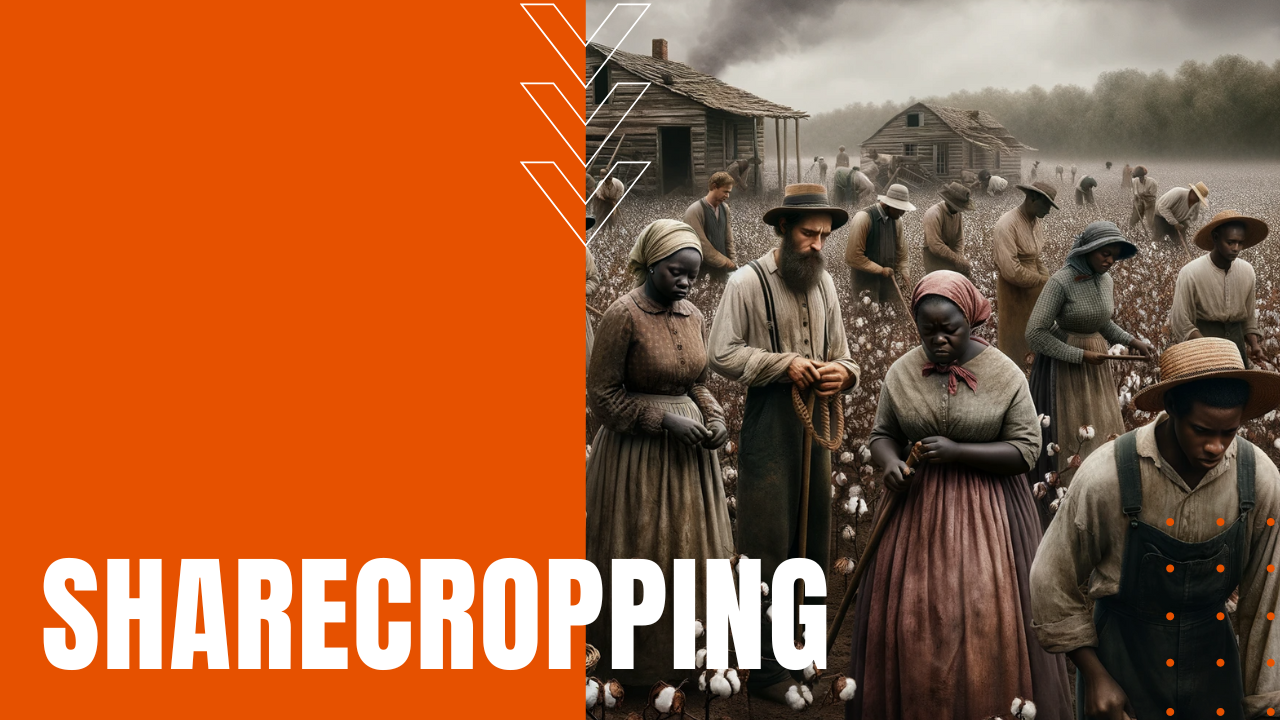Sharecropping in the American South

During the waning days of the Civil War, thousands of freed slaves followed General William T. Sherman and his victorious Union Army across Georgia and the Carolinas, where he issued his Special Field Order Number 15 on January 16th, 1865. In response to the growing refugee crisis, Sherman’s order granted each freed family 40 acres of land along the coastal regions of Georgia, many receiving an additional gift of a mule, which were no longer needed in support of the Union’s war efforts.
Rescinded Order
Instead, after the war officially ended three months later, President Andrew Johnson rescinded Sherman’s order, returning lands back to their original owners, while forcing freed Blacks off the land Sherman had justly or unjustly given them, oftentimes at gunpoint. Many returned to their former plantations, where freed Blacks and poor whites alike sought jobs, while cash strapped plantation owners sought laborers.
Sharecropping Begins
Instead of the gang-labor practices that existed prior to emancipation, plantation owners signed restrictive contracts with poor sharecroppers, offering land use in lieu of wages so that subsistent farmers could grow crops in support of their families, who in turn gave a percentage of their crop yield back to the landlord instead of cash payments in rent. By the early 1870s, sharecropping had become the dominant agricultural practice in the South, and while two-thirds of sharecroppers were white, the rest were made up of freed Blacks.
Lingering Prejudice
Despite the passage of the 14th and 15th amendments, which on paper, at least, gave Black Americans citizenship, equality and the right to vote, sharecropping combined with Southern Black Codes and Jim Crow laws to force Black Americans into yet another form of bondage. In an era defined by falling cotton prices, sharecroppers frequently owed more to landowners for the use of land, tools and supplies than a sharecropper’s harvest yield could cover, while punishing contracts forced them to farm their lands until their debts could be paid off.
Improved Conditions
By the Great Depression years of the 1930s, sharecroppers gained some bargaining power through the Southern Tenant Farmers Union, while increased mechanization in the 1940s combined with better paying jobs in industrialized cities to bring a sudden end to the once dominant agricultural practice, making sharecropping, a bygone era in the post-Civil War South.
